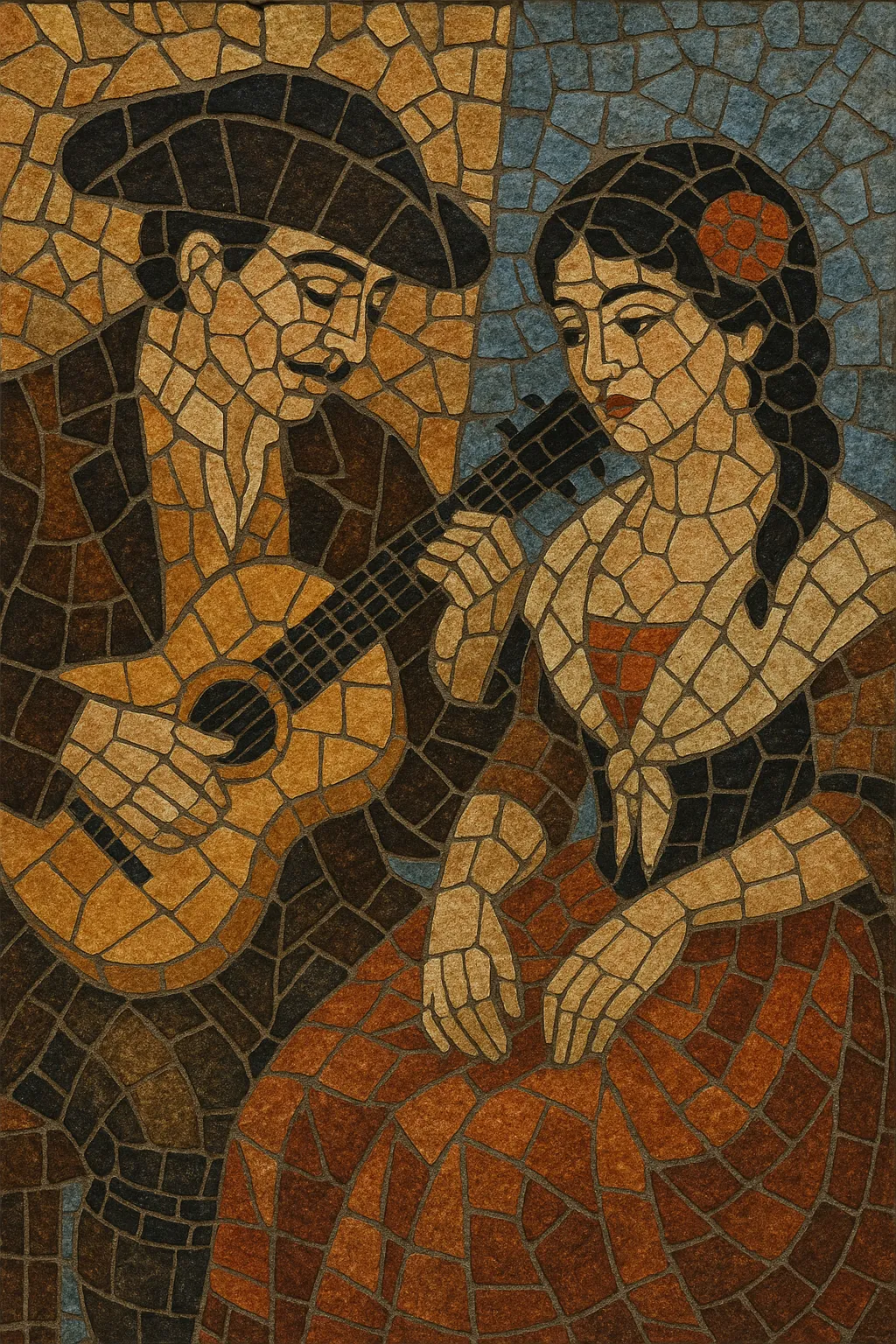Tonadilla (often "tonadilla escénica") is an 18th‑century Spanish musical‑theatrical interlude: a short, lively piece—typically 5–10 minutes—sung between acts of a play or sainete.
It mixes popular, street‑level idioms with courtly theater, featuring witty, topical texts, costumbrista scenes, and characters like majos and majas speaking in castizo Madrid slang.
Musically it blends dance‑song forms (seguidillas, bolero, fandango) with clear, tuneful melodies, light accompaniment, and strophic designs, creating a vivid snapshot of urban Spanish life.
It was most associated with the Madrid stages (Teatro del Príncipe, Teatro de la Cruz) and became a bridge between baroque zarzuela traditions and later Spanish song and stage genres.
Emerging in mid‑18th‑century Madrid, the tonadilla grew out of baroque stage practice and the intermedio tradition, closely tied to zarzuela houses and the one‑act sainete. Its texts captured everyday life, satire, and local color, reflecting the voices and manners of the city and its neighborhoods.
By the 1770s–1790s the genre matured stylistically: strophic, dance‑inflected numbers (seguidillas, bolero, fandango) with catchy refrains, clear phrase structures, and accompaniments for small theater ensembles (strings, guitar, keyboard, and occasional winds). The music favored immediacy and memorability, enabling star tonadilleras to project personality and text with flair.
Composers such as Blas de Laserna, Pablo Esteve y Grimau, Jacinto Valledor, José Castel, Luis Misón, and José Palomino supplied hundreds of works, often collaborating with librettists like Ramón de la Cruz. The genre flourished at Madrid’s Teatro del Príncipe and Teatro de la Cruz, where famed performer‑actresses (tonadilleras) like La Caramba and La Tirana became cultural icons.
Although tastes shifted in the early 19th century, the tonadilla’s blend of popular idioms and theatrical craft fed into later zarzuela, the salon‑song lineage of copla and cuplé, and inspired 20th‑century art‑song evocations (e.g., Granados’s Tonadillas al estilo antiguo). Its snapshot of urban Spanish life and dance‑song syntax remains a touchstone for Spanish musical identity.


